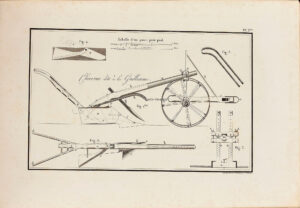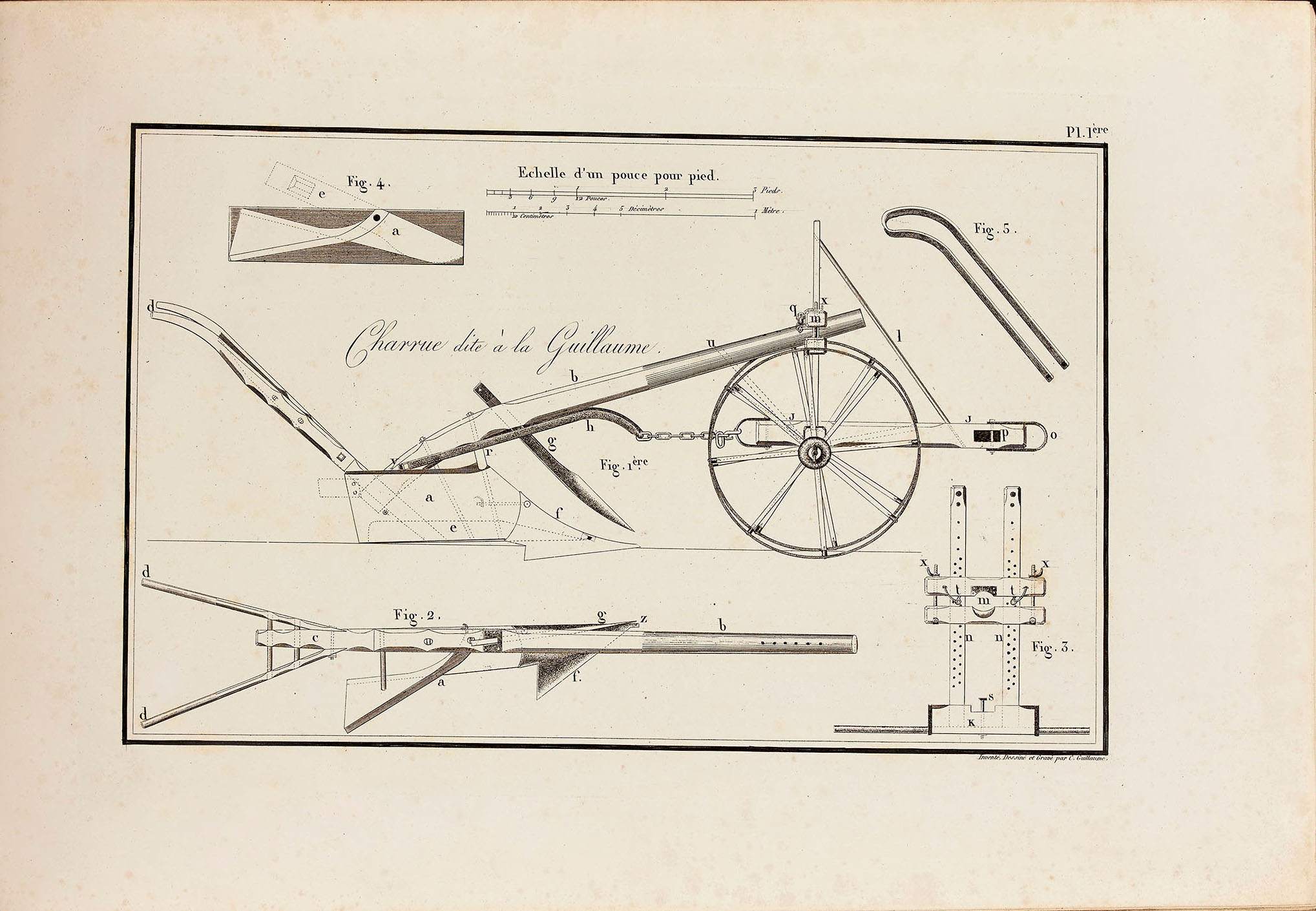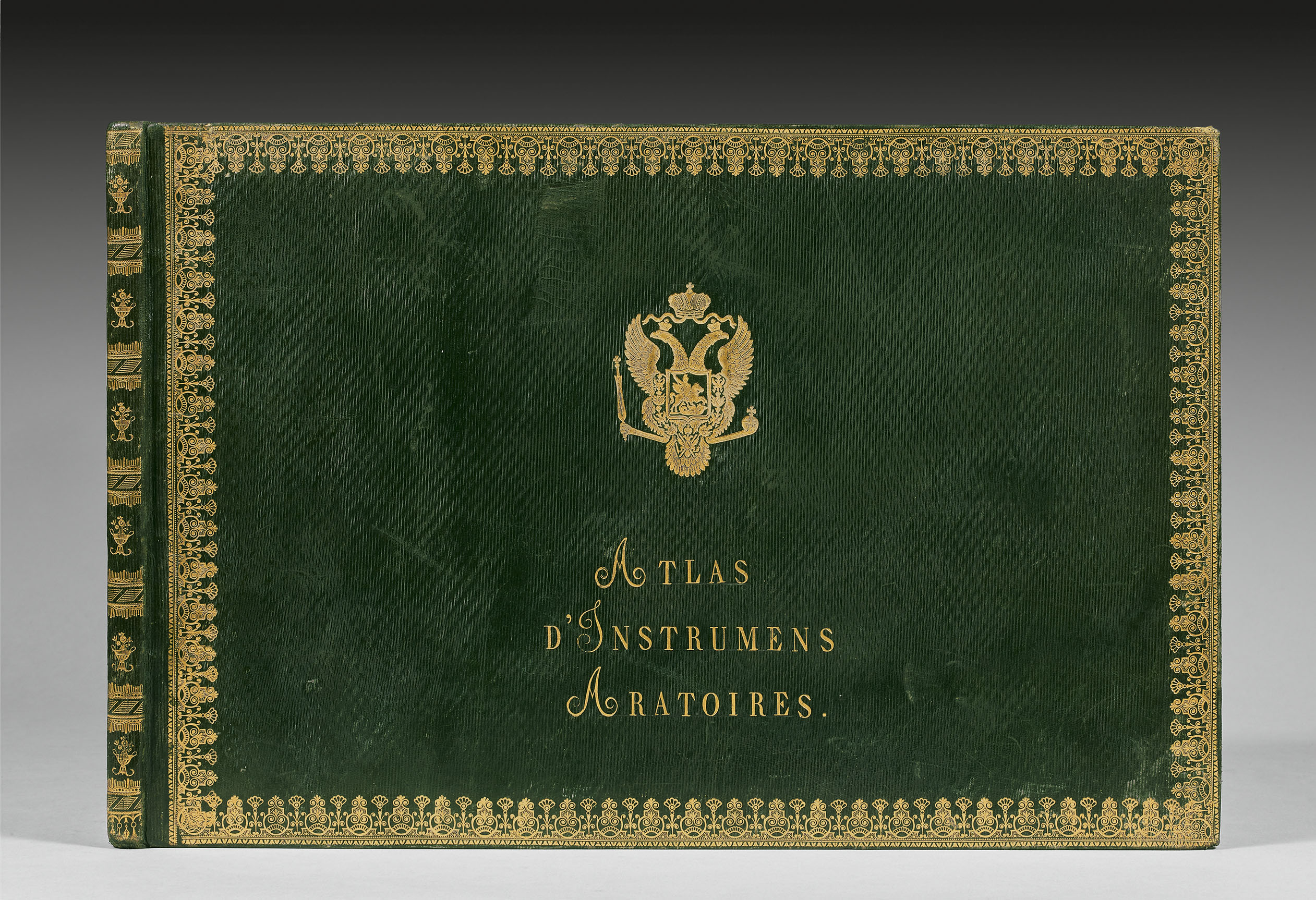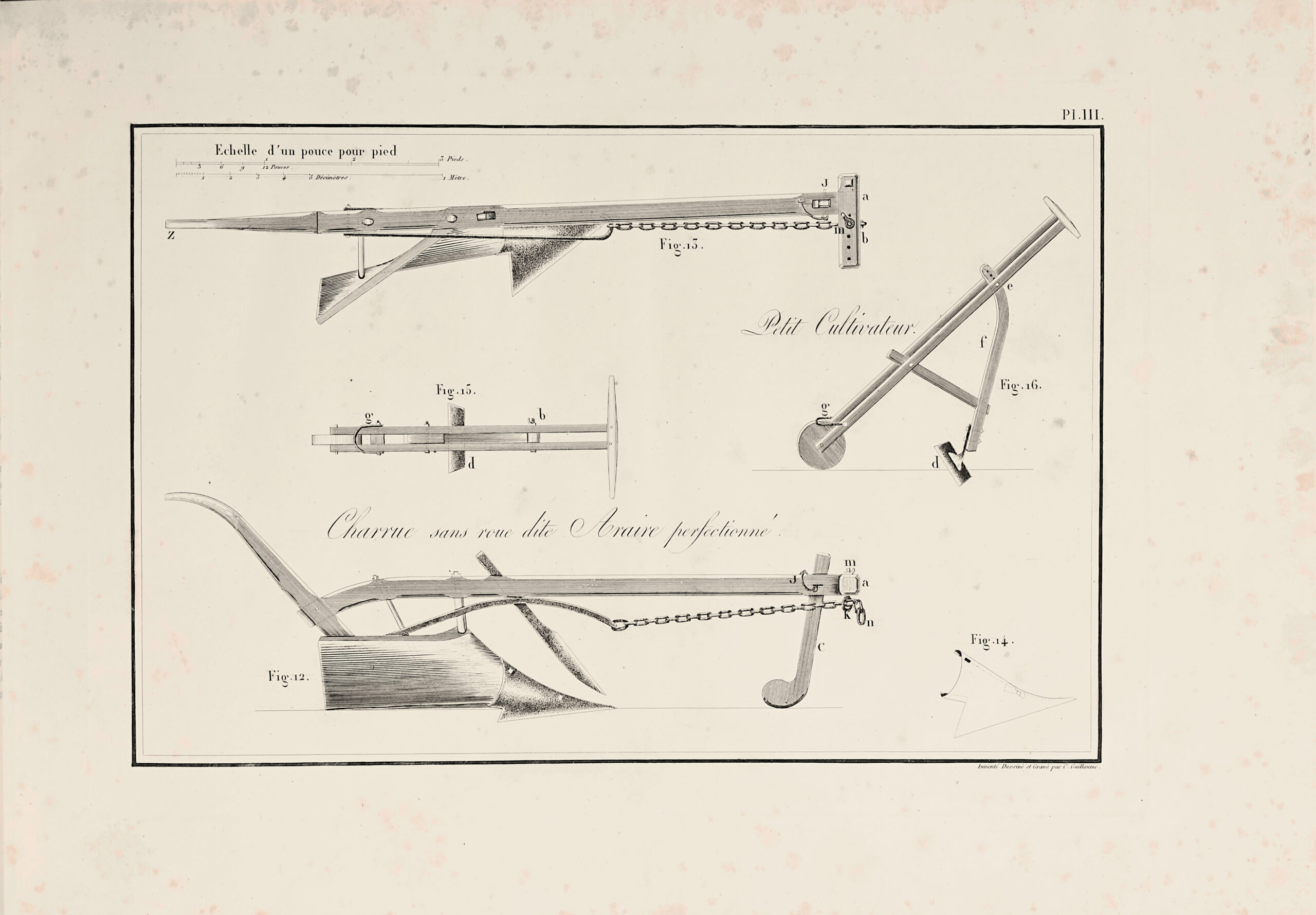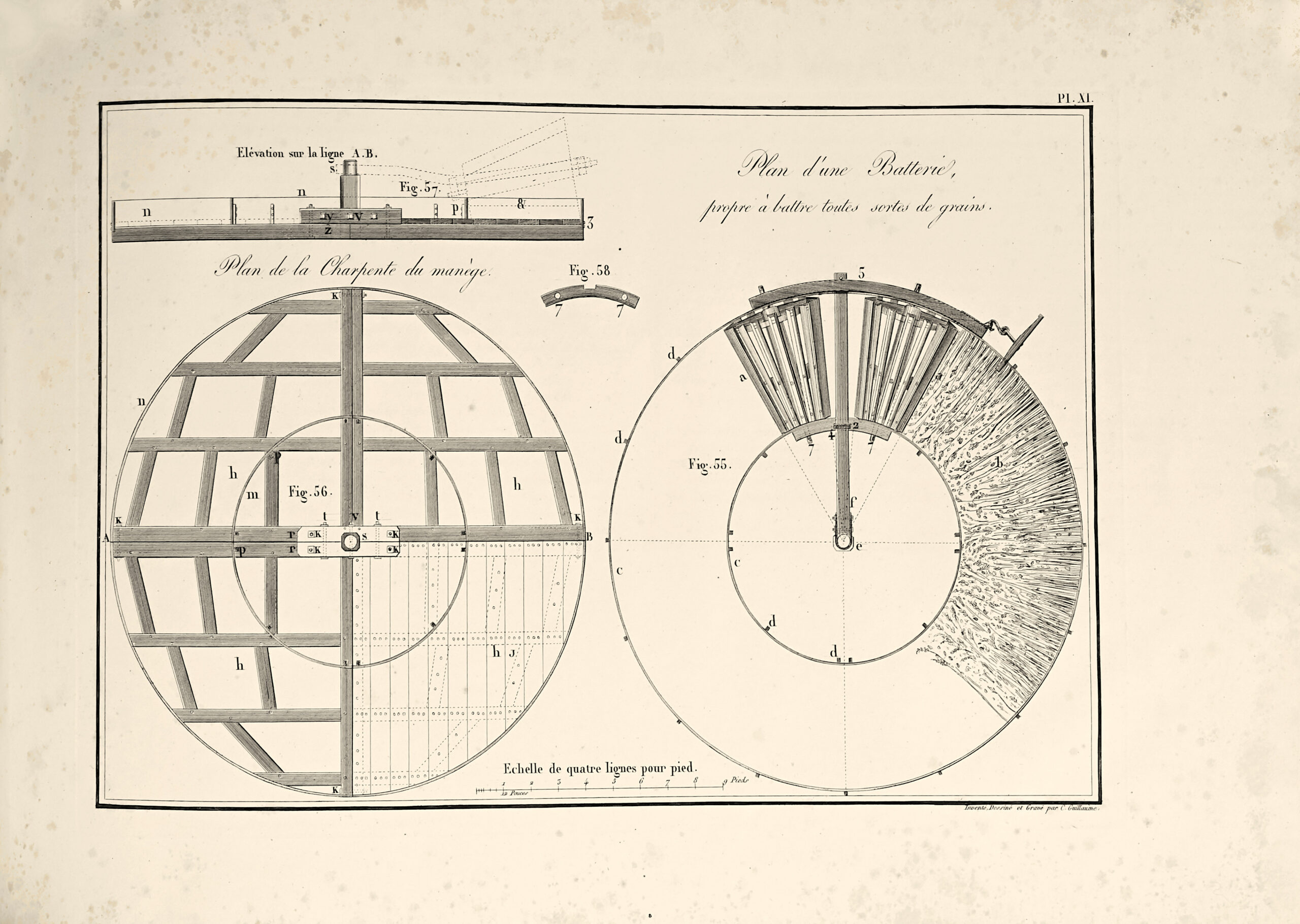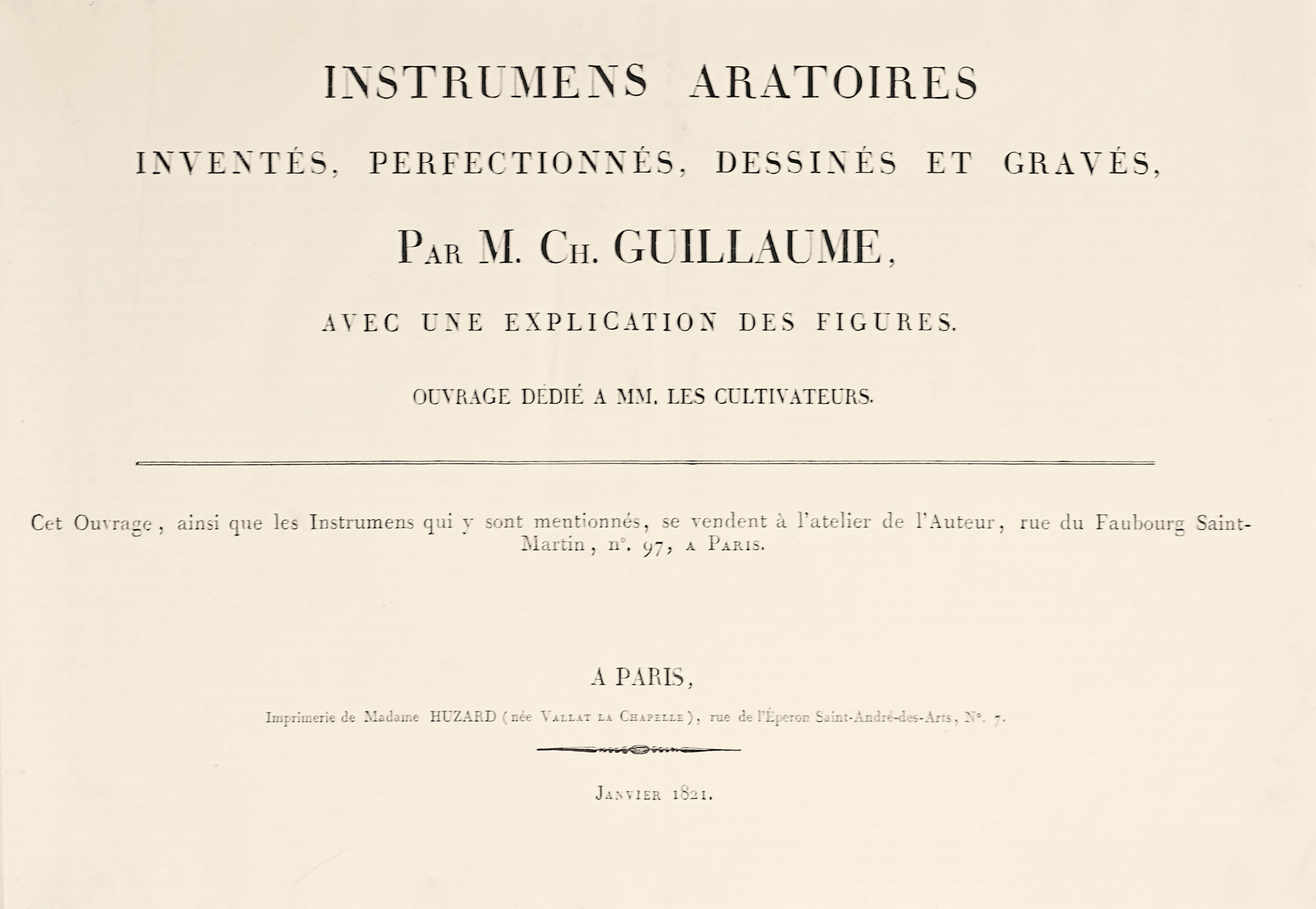Paris, Imprimerie de Madame Huzard, Janvier 1821.
Folio oblong [275 x 417 mm.] of (28) pp. and 12 numbered plates. Rare foxing on the plates. Green straight grained morocco, coversdecorated with a straight lace-like tooling in framing, arms in the center over the gilt-stamped mention “Atlas d’Instruments Aratoires”, flat decorated spine, inner border, gilt edges. Contemporary armorial binding.
Rare first edition representing the “Instrumens Aratoires inventés, perfectionnés, dessinés et gravés par Charles Guillaume” under the empire and the restoration.
The development of his “plough à la Guillaume” improved the French agricultural productivity on the eve of the industrial revolution and thus allowed the first rural exodus which provided the workers of the national industry.
“This work, that Mr. Guillaume dedicated to MM. the cultivators, comes as a result of his love for the first and the most useful art, and his ardent zêl for its prosperity. Son of a cultivator, he took the decision to devote himself entirely to the improvement of known tillage tools, and the invention of some other tools of which he felt the need and utility for agriculture.
He presented at the competition of the central society of Agriculture at the department of the Seine, a plough that he had improved in all its parts, and especially with regard to the planter shoe, the mouldboard and the draw line. On April 5th 1807, this plough has been crowned, and the Society awarded the crêtor with a gold award and a price of 3 000 francs. This instrument was principally considered,in terms of the draw line, as the best not only of all the ones that sent to the competition, but of all the tools that were known and used until now. Since, we talk about it with distinction, in different works, under the name of the “plough à la Guillaume”.
In this work, he assembled the collection of all the machines and tools that he invented for the sole purpose of contributing to make the cultivation of the land, êsier and therefore more enjoyable. He sought by every mêns to combine solidity with simplicity.”
The volume, illustrated with 12 full page plates, describes the plough à la Guillaume, the ones called“Turn êr”, “the advanced Ard, the Horse Hoe, the plough with two and four rays, the Rake of the gardener, the triangular Harrow, the Weeder, the Scarifier, the Roller, the Straw-Chopper, the horse Rake, the Cut-Root, the Windmill, the battery to bêt all kinds of grain, the fluted roll to bêt the bled”.
Copy printed on large vellum paper bound in contemporary green morocco with the arms of Tsar Alexander I of Russia, Paulowitz, grandson of Catherine the Grêt, emperor of all Russia, born in 1777, died in December 1825 in Taganrog.
